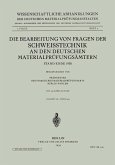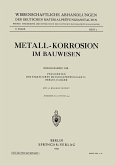Doktorarbeit / Dissertation aus dem Jahr 2000 im Fachbereich Chemie - Materialchemie, Werkstoffchemie, Note: 1, Technische Universität Hamburg-Harburg (GKSS Forschungszentrum), Sprache: Deutsch, Abstract: The influence of plastic strain on the diffusion behaviour of hydrogen in a low alloyed structural steel (FeE 690T) was investiated using the electrochemical permeation technique. The plastic deformation was introduced either by cold rolling or by tensile straining. It was shown, that the apparent diffusion coefficient depends on the plastic strain and on the overall hydrogen concentration, whereas the maximum hydrogen flux remained almost unchanged. These observations are interpreted in terms of variations in the dislocation density, which act as 'sinks' for the diffusable hydrogen atoms. Together with the results of a previous study on the fracture toughness of FeE 690T in the presence of hydrogen the permeation data obtained in this work suggest that the observed influence of deformation rates on the fracture mechanism can be attributed to the reduced mobility of hydrogen atoms in the plastic zone. The assumption that the hydrogen transport during monotonic straining is controlled by diffusion was confirmed by investigations concerning the formation of surface films. Using a potentiodynamic method (cyclovoltammetry) a characterisation of the surface reactions involved in permeation experiments was performed. It was shown that the nature of the passive layers forming on the surface depens on the applied potential, affecting mainly the hydrogen absorption reaction. The hydrogen entry is assumed to preferably take place at so called 'active sites' on the metal surface.
Dieser Download kann aus rechtlichen Gründen nur mit Rechnungsadresse in A, B, BG, CY, CZ, D, DK, EW, E, FIN, F, GR, HR, H, IRL, I, LT, L, LR, M, NL, PL, P, R, S, SLO, SK ausgeliefert werden.









